Cryo Nano Water-Cooled SFF Gaming PC Review
Cryo Nano Water-Cooled SFF Gaming PC
Cryo's water-cooled, overclocked Nano is the best-performing small form factor gaming machine we've seen to date.
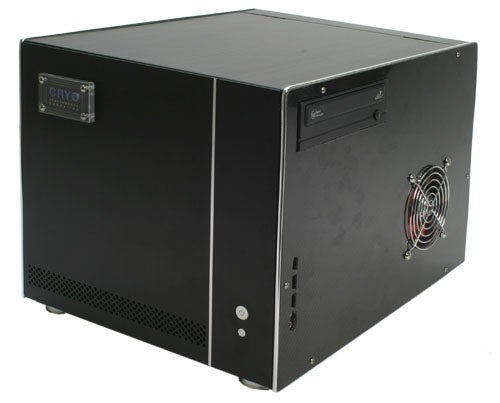
Verdict
Key Specifications
- Review Price: £995.00
If you want a high-performance, overclocked PC, you’re usually going to end up with a big, heavy beast – like the CyberPower Infinity i7 Phoenix. On the other hand, small form factor (SFF) machines tend to compromise dramatically, and if you do want a powerful one you usually end up paying a significant premium for a machine that doesn’t offer much flexibility. Common limitations include needing to use slim-line optical drives, only being able to install a single hard drive or small video card, and small, noisy fans – and that’s if you avoid systems from the likes of Shuttle with proprietary (i.e. non-replaceable) motherboards.
As one of the few assemblers to offer high-performance gaming PCs in relatively small chassis in the UK, can Cryo change all that? Well, on paper the company’s Nano certainly makes for an impressive attempt. Housed in an attractive SFF Lian Li case with optional custom “Graphite” finish, the Nano offers a water-cooled, overclocked Core i5 or i7 processor, up to 8GB of RAM, as much as 6TB of hard drive storage (in various configurations including SSD+HDD and RAID), and pretty much any graphics card setup you can afford, up to twin ATI Radeon HD 5970s – all installed in a high-end Asus Republic of Gamers micro-ATX board.
The system we were sent will set you back just under £1,000 and provides a Core i5 overclocked to over 4GHz, an ATI Radeon 5850, a DVD-rewriter and 500GB hard drive. So, it’s relatively modest considering some of the options on offer but it still should be an adequate gaming system. 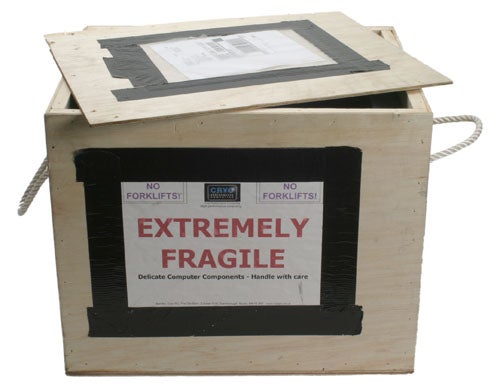
The first, very pleasant, surprise came when the system arrived; unlike even the most expensive PCs we’ve had in to date, which all came in various cardboard boxes, the Cryo is packaged in a very solid wooden crate lined with thick foam and sporting rope carrying handles – nice! Though we were slightly less enthusiastic after removing the 14 screws that hold the lid closed, this is undoubtedly the best-packaged system we’ve come across, and lends the Nano a feel of class before it’s even out of the box.
At 279 x 262 x 373mm (WxDxH), the Lian Li PC-V351 is barely small enough to still be called a SFF case. With its brushed metal sides and tight, unbroken lines it’s a very attractive box though. Unfortunately, our model came with the aforementioned Graphite finish (offering “aerospace-grade carbon fibre and chrome construction”), which is supposed to not only lend a uniquely attractive visual impact but also help shield the PC from EMF for whatever that’s worth. 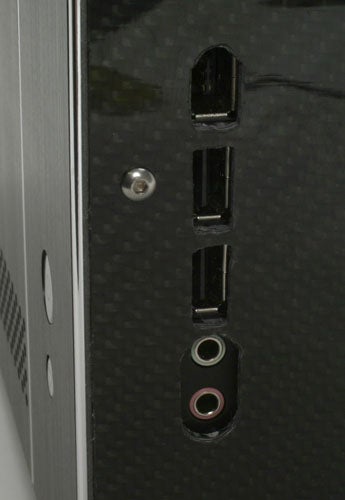
I say unfortunately because, in real life, the graphite finish (which is only applied to the two sides of the case) really isn’t that attractive. Personally, I think the carbon fibre panels look inferior to the brushed aluminium they hide, and while this might be subjective, the poor finish and fit of the panels is anything but. It’s especially noticeable around the side connectivity, where cut-outs are sloppily done by hand.
Another negative is that these custom carbon fibre panels block the case’s second 5.25in external bay so you can’t add a second optical drive or memory card reader at a later date, not to mention that they make plugging USB devices in less secure due to the increased width. Considering you have to cough up an extra £230 for the privilege of owning the custom Graphite finish we heartily recommend avoiding it, especially as without it the Nano looks stunning.
Other custom Cryo touches include the company’s logo in a blue-backlit clear Perspex plate at the front. Though initially it looks attractive, on closer inspection you may notice that the cardboard logo is poorly cut out and the Perspex edges are quite sharp. Again we would recommend that you ask for it to be left off your build. 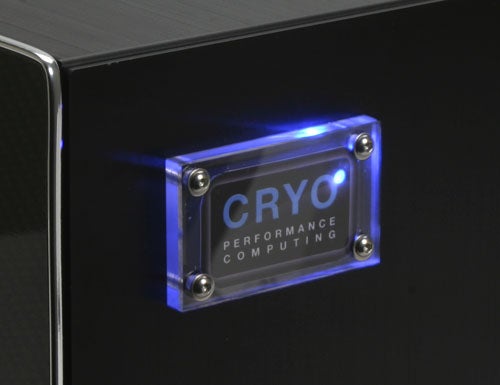
There’s also a custom 90mm Xilence side fan for extra cooling, which is very neatly fitted. We wish Cryo had gone for a blue one rather than the red fan used here, though. Unfortunately the fan is still one of the more audible parts of the PC, but hooking it up to one of the motherboard’s fan headers (rather than directly to the PSU as done here) should at least ensure it’s not constantly running at its maximum. Even better news is that disconnecting it entirely still results in a fairly cool system.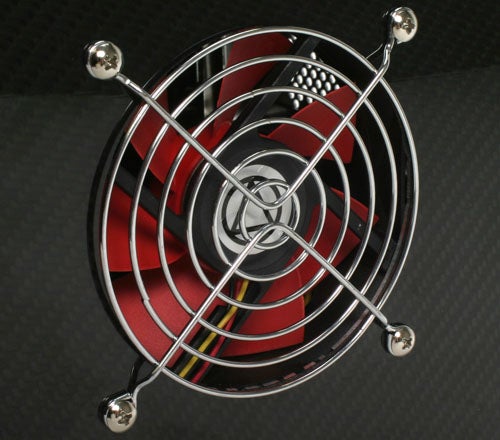
In order to accommodate full-size components in its relatively small PC-V351 case, Lian Li has made a few unusual placement choices. Power and reset buttons are located at the front of the machine as usual, but the optical drive and connections have been relocated to the right side. The power button is backlit in an attractive blue, and cleverly the reset button doubles as the hard drive activity light, though it’s backlit in jarring red. The side connectivity is a bit sparse: a FireWire port, two USB ports and the usual headphone plus microphone jacks are all you get.
Thankfully the Nano more than makes up for this by being based on one of the most feature-rich micro-ATX motherboards around: an Asus Republic of Gamers (ROG) Maximus III Gene, of which we should incidentally be doing a review soon. Around the back then you get eight USB 2.0 ports (a ninth USB connector is for Asus’ ROG connect feature, which allows you to use a second computer/laptop for overclocking). One each of PS2, FireWire and eSATA are joined by a Gigabit Ethernet socket, while audio is taken care of by an integrated X-Fi SupremeFX sound-chip that provides digital optical and six analogue outputs. 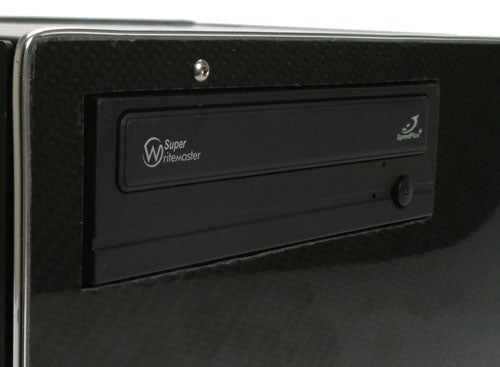
As you might have noticed the only significant absentee here is USB 3.0. We’re hoping Asus will add this connection to its highest-end micro-ATX board soon, though in the meantime there are free PCIe slots so you can install a USB 3.0 expansion card (or Cryo will install one for you on request).
Opening the Lian Li PC-V351 case up is by no means easy. Though there’s a handy slide-out removable motherboard tray, to hook up or detach the necessary cables you’ll need to remove a side panel which is far less straightforward. Each of the case’s two panels is held on by six low-profile hex-cap screws, which are a pain to remove. There’s no clip or slide system for the side panels either, so getting the screws back in is slightly awkward.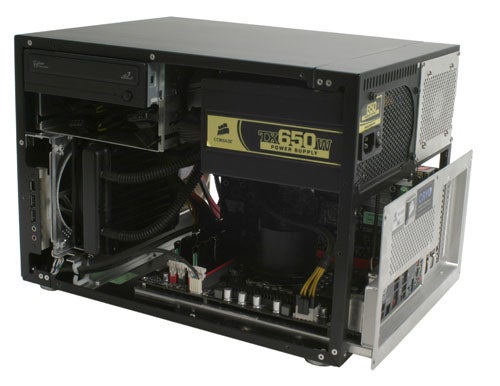
Inside, the case is as roomy as any SFF model we’ve yet encountered, not only allowing for the largest video cards but also for some pretty decent CPU coolers. Of course with the Nano the latter is not a concern, as its processor is cooled with a Corsair H50 watercooling system. The radiator for this setup is housed towards the front of the case, where it’s cooled by a 120mm fan on a custom mount.
This setup has allowed Cryo to overclock the living daylights out of the humble Core i7 750 CPU while maintaining low temperatures. Usually running at 2.66GHz as a maximum per core, the 750 in this machine will run at a turbo-clocked 4.05GHz. Considering there’s very little that the i5 750 can’t handle with ease at its stock speed, in this overclocked state it should fly through anything you throw at it. As such, there really is no reason for the average home user or gamer to go for one of the more expensive CPUs Cryo offers in its Nano. 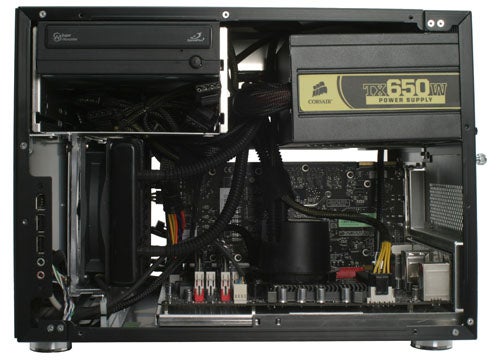
As is usually the case for gaming PCs under £1,000, the CPU is backed by 4GB of DDR3 RAM, which is adequate for most games and of which a 64-bit version of Windows 7 Home Premium takes full advantage. Here Cryo has used two sticks of Mushkin 1600MHz memory, which together with the CPU has been given a voltage boost to accommodate the overclock. You can upgrade to 8GB on Cryo’s site, though that will cost you a further £160, so you might be better off just adding more memory yourself at a later date if you need it.
Storage is provided by a 500GB Samsung SpinPoint F3 hard drive naturally running at 7,200rpm. This is pretty much the minimum you can expect on a modern system, but at least HDD upgrade prices are fairly reasonable and upping this to a 1TB drive will only set you back £25 extra. As mentioned there are various options available and you can go all the way to 6TB or get a Corsair Extreme Series SSD as your primary drive instead (though a 64GB SSD model will add a whopping £173).
Last though not least we get to the most important element of any gaming PC: its graphics. Incidentally, the HIS Radeon HD 5850 Cryo has used for this machine is the very model we reviewed. Right now ATI’s 5850 offers the ideal balance between performance, price, power and noise, making it the best value gaming card around – something that hasn’t changed with the recent launch of nVidia’s underwhelming GTX 470 and 480. 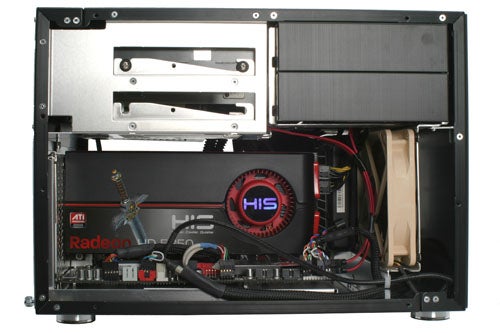
So how does the PC hold up in gaming? The simple answer is “really well”. Surprisingly, it matched the DinoPC i7-Osaurus (which sports a Radeon HD 5870) in most gaming benchmarks, trailing by just a few frames in DirectX11-title Stalker and even beating it consistently in Crysis.
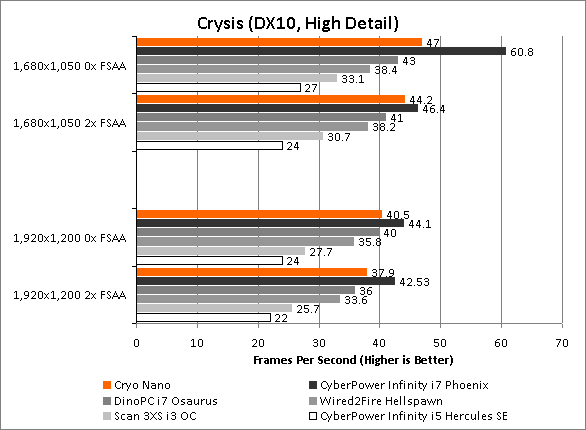
Though Crysis is a more CPU-intensive title than many, we’re still at a loss to explain this difference. Cryo’s “Cryo Boost” ensures a GPU overclock only on nVidia cards and hence the 5850 in the Nano is running at stock speeds, so we can only surmise driver improvements on ATI’s part also play a role. Regardless, we could run Crysis at 1,920 x 1,200 on High Detail without the frame rate ever dipping below 30fps, which is very impressive. Very High Detail, however, was just barely playable at this resolution with a 26.2fps average.
So leaving off the underwhelming optional Graphite finish and poorly-machined Cryo logo, the Nano is a great-looking machine, using high-quality components, relatively compact and quiet, and with absolutely storming performance for its form factor. The only real negatives are generally expensive upgrade prices and the lack of USB 3.0 (a lack no other SFF gaming system we’re aware of remedies at the moment). One other consideration is that the company’s two-year warranty is return to base (RTB) where many competitors offer collect and return (C&R) at least for the first year.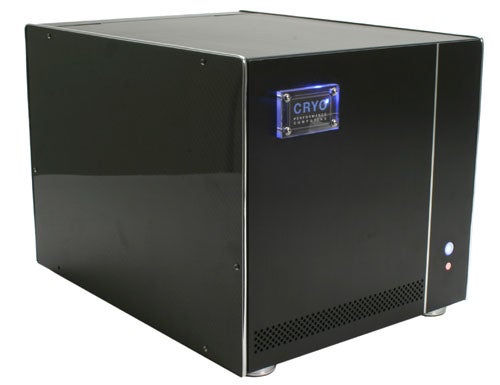
However, for a water-cooled, overclocked and fully customizable SFF gaming PC that outperforms many tower systems we’ve reviewed, the Cryo Nano is truly excellent value for money at just under £1,000 – especially as the DinoPC i7-Osaurus has gone up in price dramatically since our review. Put quite simply, the Nano is the gaming PC I would buy if I was looking for a system in its price class, and Cryo wasn’t exaggerating when it claimed that its SFF PC “breaks the mould”.
Verdict
The Nano’s performance for the price would be impressive enough for a tower system, but Cryo has produced the fastest and most flexible SFF machine we’ve ever seen. If you want a killer gaming PC in a relatively compact case, this overclocked, water-cooled effort won’t disappoint.
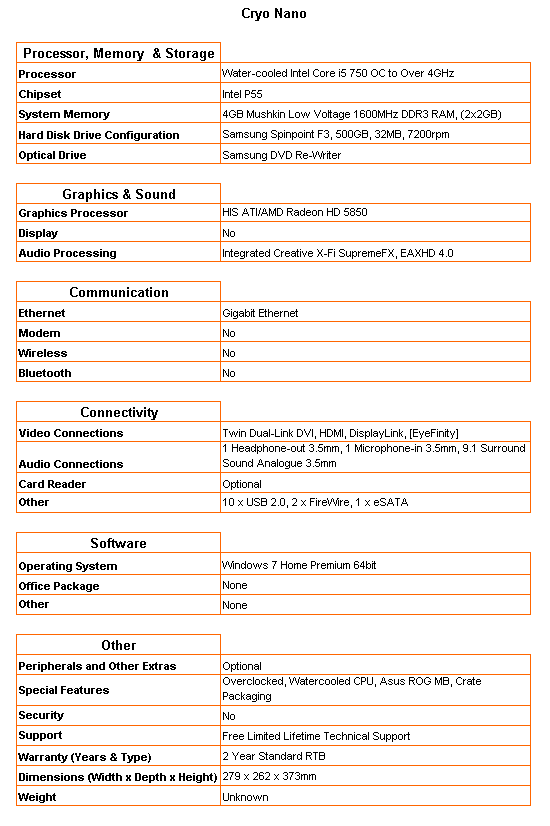
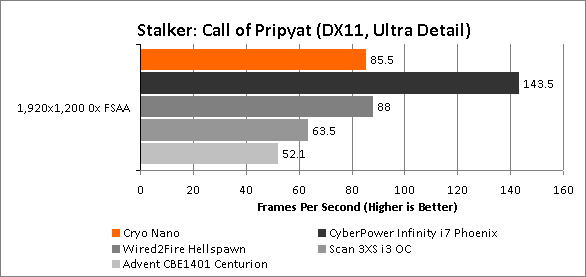
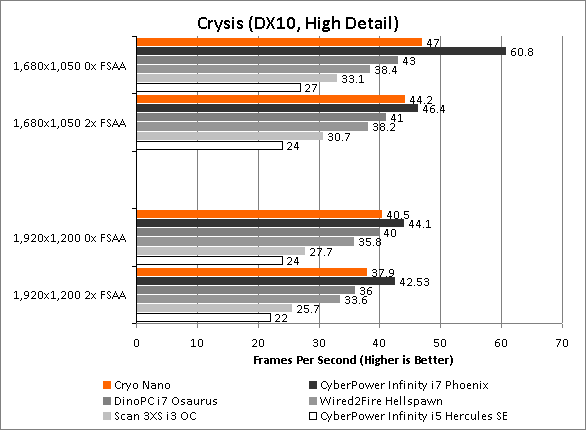
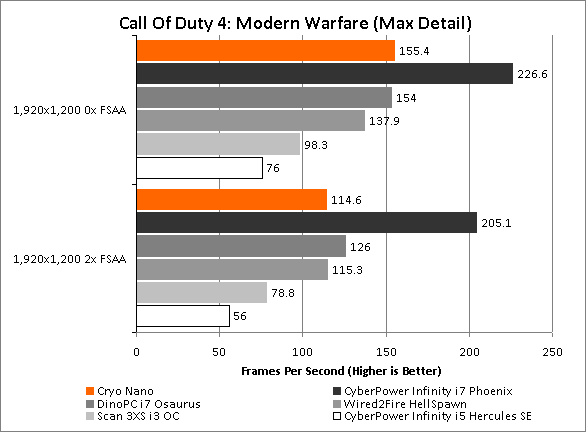
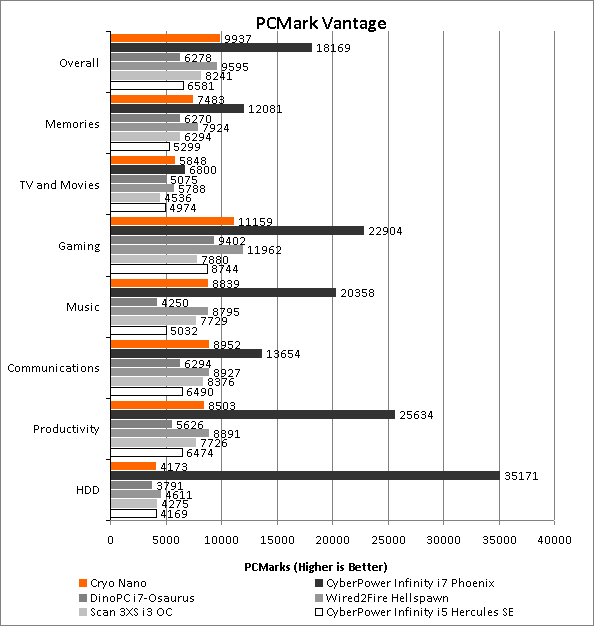
Trusted Score
Score in detail
-
Value 9
-
Features 8
-
Performance 8
-
Design 8

